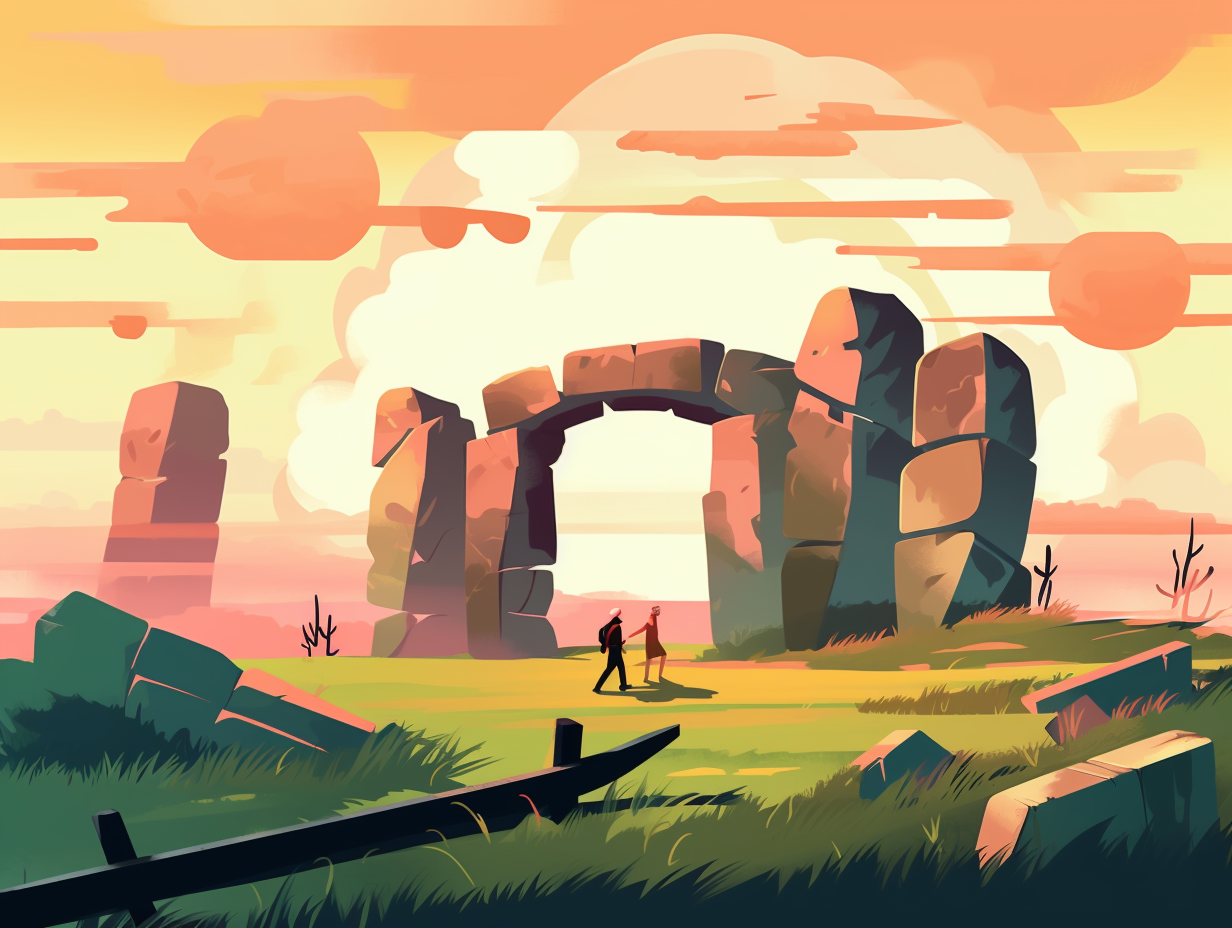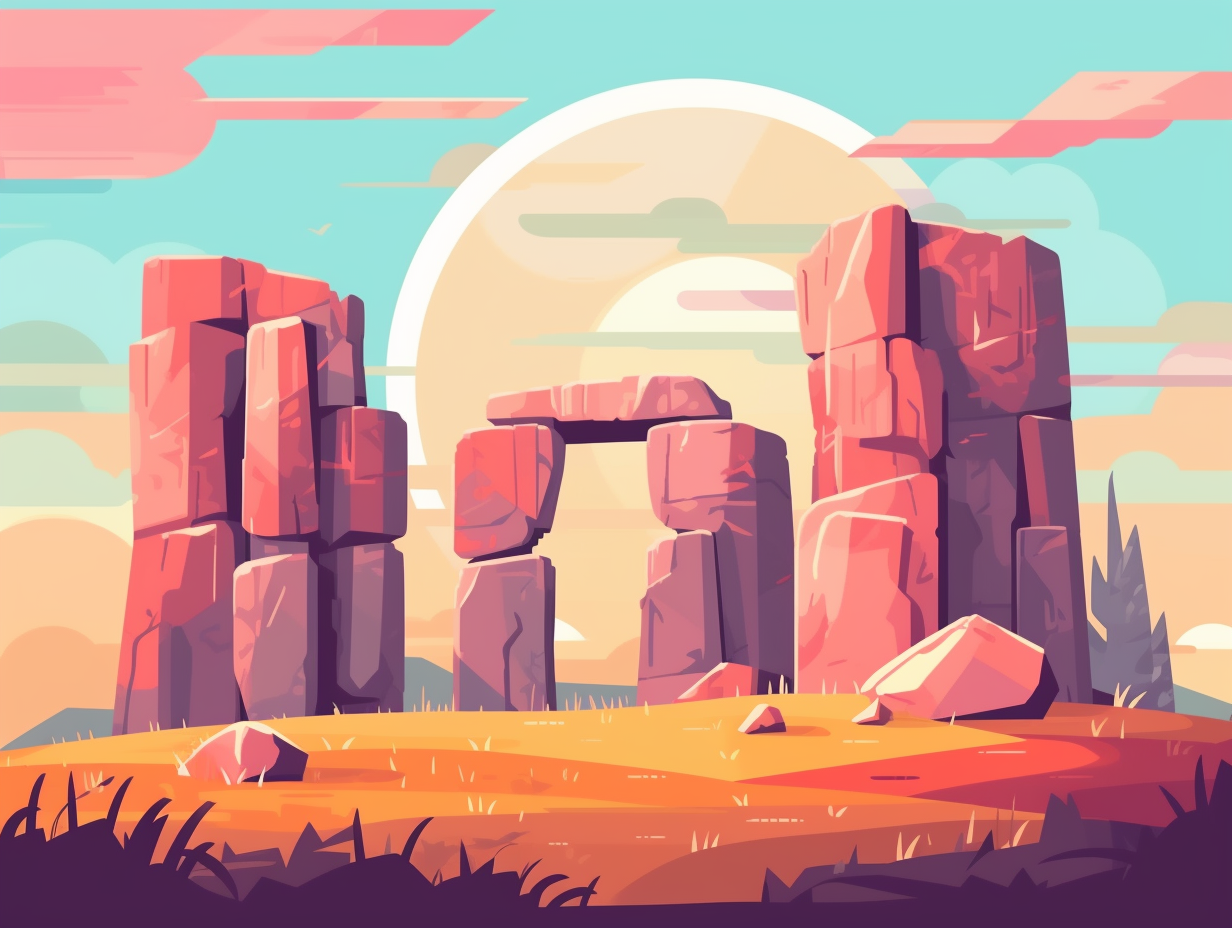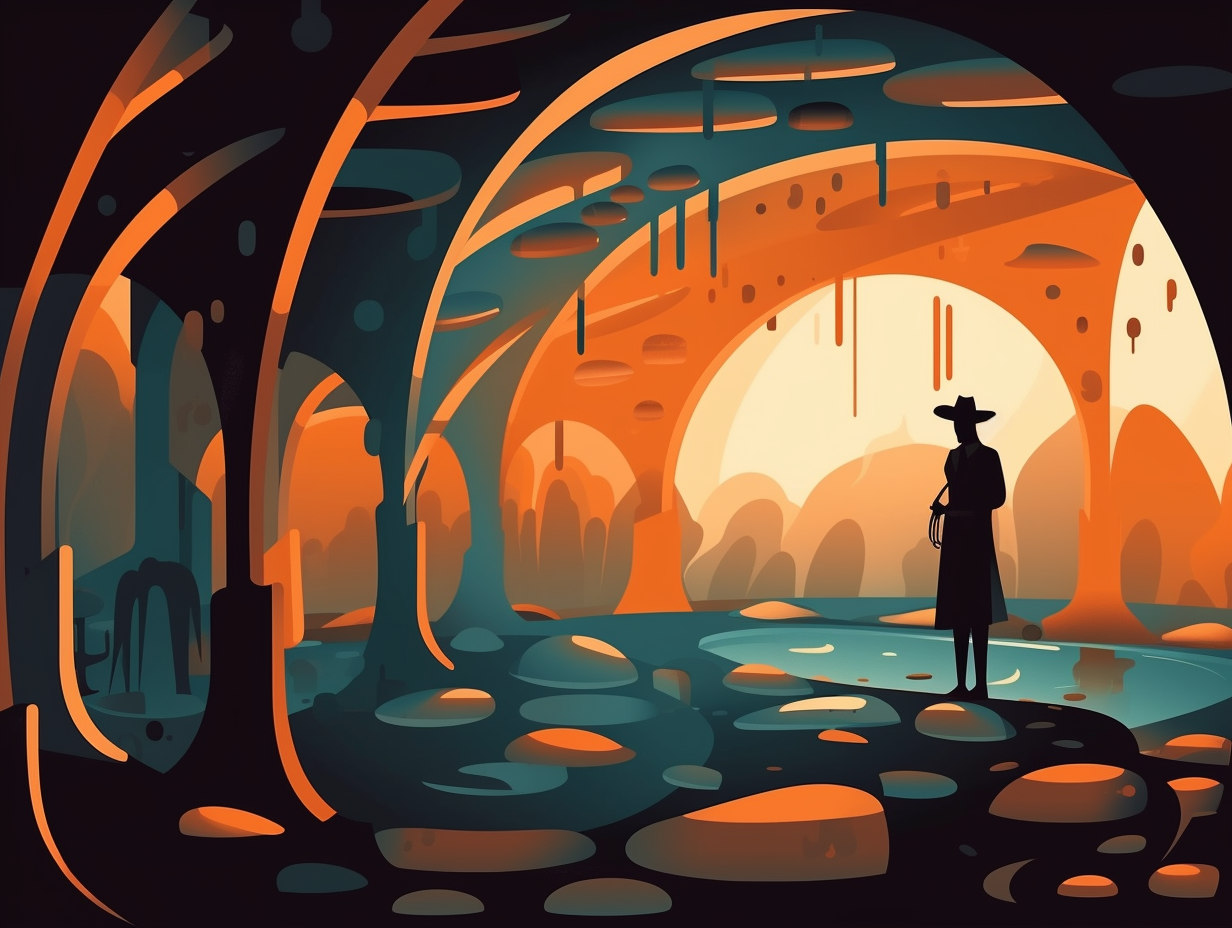Unraveling the Mystery: Top 13 Fun Facts About Stonehenge You Need to Know

1. Ancient Google Calendar Party Planners
Before there was Google Calendar, there was Stonehenge: an ancient British monument that doubled as a celestial planner and a hotspot for religiously charged feasts, especially during the key sun-centering solstices. Evidence from pig and cattle bones at a nearby settlement suggests that the prehistoric partygoers didn't hesitate to treat themselves to a grand banquet celebrating these astronomical marvels and some good old ancestor appreciation.
Source => britishmuseum.org
2. Stonehenge's Construction Saga
If Stonehenge had a relationship status on Facebook, it would be "It's complicated": Famed for its ever-changing architectural phases, this ancient wonder began construction around 3000 B.C., with wooden poles for astronomical guidance, bluestones from Wales around 2500 B.C., and the notorious outer circle of sarsen stones arriving circa 2000 B.C. - only to be rearranged into present-day mystique during the mid-Bronze Age.
Source => evanevanstours.com

Did you know the Terracotta Army has a surprising empty pit, just like a disappointing sandwich? Discover what archaeologists believe this vacant space means and the incredible treasures found in other pits!
=> Fun Facts about The-Terracotta-Army
3. The Masterminds of Ancient Tongue and Groove
Whoever said ancient folks were "as dumb as rocks" clearly never met Stonehenge's architects – seems they had a lock on tongue and groove long before it hit the dancefloor: Laser analysis of the monument's stonework reveals the ingenious construction methods employed, and that certain parts were even more meticulously finished than others, using an array of tools and copious sarsen and bluestone waste material.
Source => english-heritage.org.uk
4. The Epic Bluestone Road Trip
Talk about a real moving experience: The bluestones at Stonehenge actually started their "rocky road trip" from an earlier stone circle in Wales called Waun Mawn, weighing 2-3 meters tall. Fast forward 300-400 years and they became part of the iconic prehistoric monument on the Salisbury Plain, possibly as a means to stay spiritually linked to their past or stake claim on a new territory.
Source => science.org

5. Woodworking Wizards at Stonehenge
When Stonehenge builders weren't predicting the next sci-fi box office hit, they were probably dabbling in their woodworking hobbies: these Neolithic masterminds applied the structural stability of tongue and groove joints and a joggle joint from carpentry techniques to construct a massive, raid-proof stone ensemble.
Source => sussingstonehenge.wordpress.com
6. The Original Rock Show
Move over, Dwayne "The Rock" Johnson—there's an even more impressive rock show in town: Stonehenge stands proud as the architecturally sophisticated stone circle heavyweight of the world, boasting sarsen stones tipping the scales at a whopping 40 tonnes and flaunting ingeniously interlocked joints as if it's nobody's business.
Source => english-heritage.org.uk
7. VIP Graveyard and Celestial Club
Before embarking on our favorite creepy crawlies, the Addams Family should have checked out the VIP graveyard at Stonehenge for some truly ancient spooktacular company: Archaeologists have discovered human remains and cremated bone fragments around Stonehenge, suggesting it was a burial ground for high-ranking individuals, as well as a possible celestial observatory with alignments to the movements of the sun and moon.
Source => khanacademy.org
8. The Ultimate Family Reunion Spot
You know you're really going places when you lug massive stones 140 miles just to build a family reunion spot: Stonehenge's first stage consisted of bluestones, symbolizing Neolithic ancestors, that were transported all the way from the Preseli Hills in Wales, possibly to mark a new graveyard for their lineage in a far-off region.
Source => livescience.com
9. Stonehenge Frequent Hauler Program
If Stonehenge had a frequent flyer program, it would be woefully lacking in air miles: The sarsen stones, weighing an average of 25 tons each, were only brought from a mere 20 miles (32 kilometers) away at Marlborough Downs. To put it in perspective for jet setters, the total weight of these stones is around 80 tons, while an empty Boeing 747 jumbo jet weighs a whopping 400 tons.
Source => livescience.com

10. Wally Wallington, Stonehenge-ius
Who needs a crew when you've got a true Stonehenge-ius and some ancient engineering hacks up your sleeve?: Wally Wallington, a retired carpenter and construction worker, demonstrated that just one person could have built Stonehenge using a simple wooden tool called a "round road" and clever physics principles, even moving a massive 19,200-pound block (similar in size to the Stonehenge slabs) all by himself! Wally is now constructing his own grand megalithic monument using these techniques.
Source => asme.org
11. The Rich and Famous Amesbury Archer
Before there were Kardashians flaunting their riches, there was Mr. Amesbury Archer flexing his wealth for all the Bronze Age to see: Discovered near Stonehenge, the "Amesbury Archer" dates back to around 2,300BC and is believed to be an elite figure with metalworking skills who may have had a role in organizing the construction of the monument. Found in the richest Bronze Age grave in Britain, this European-born archer sported multiple gold, copper, and flint artifacts, which highlight the increasingly apparent wealth disparities of his time.
Source => wessexarch.co.uk
12. Neolithic Jenga Masters
Behold the Neolithic Jenga masters: Stonehenge, a gigantic puzzle built over 5,000 years ago, stands tall without a drop of mortar or cement, thanks to carefully shaped stones and the clever use of smaller stabilizing stones.
Source => english-heritage.org.uk
13. Stonehenge's Timber Twin
Once upon a celestial rave, even Stonehenge had a wooden sibling to dance with during the solstice soiree: Modern geophysical imaging has uncovered a nearby timber circle that was likely used for ceremonial purposes, around the same time as Stonehenge's prime – showing the ancient Britons' strong connection to the summer and winter solstices.
Source => nationalgeographic.com
Related Fun Facts




















